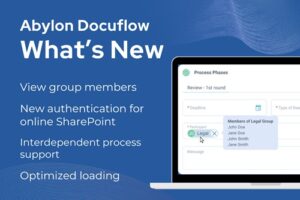Custom UI vs. Excel with database connection
How many data related software development projects have you seen, where there was a User Interface that should have stayed in Excel, if it had the capability to connect files online? I not talking about the default online editing, I mean really connect.
How many User Interfaces have you seen, that would have been better (and a lot more efficient) in Excel, if it had a proper data validation feature?
Of course, some people hate Excel, some people love Excel, and a lot of people only use Excel as a default office tool, like Word. There’s a lot of debate going on on the internet regarding this. I see articles at least a few times a year going on about whether Excel is already dead, and that everyone should use SQL, DAX, Notepad, pen and paper or basically any other tool, but for God’s sake, don’t use Excel!
However, I think (and I’m not the only one) Excel is a very efficient tool and it is here to stay. It is a very powerful tool, with a smooth learning curve and it has capabilities that other tools just don’t have. If you know it’s benefits, you know what I’m talking about. If you don’t there are plenty of online courses to get familiar with them. Don’t be put of by the fact that Excel is around for more 35 years. If you’ve seen any big company from the inside, you know it is still widely used for wide variety of use cases, simply, because it works.
Upgraded Excel with database connection any type of data projects
Now imagine, if Excel had two key capabilities:
- Communicate with databases (store data, create data, get data, update, and delete data)
- Validate the stored input, and give immediate feedback to the user when sending the requests to the database
BOOM! You get an application. You won’t get a fancy, colorful, online user interface, with huge text boxes.
But, what you’ll get is a tool that is:
- Much more efficient to display data.
- Much more efficient to create and store massive amount of data.
- A solution that doesn’t require classic Front-end development. If you have Microsoft 365 (former Office 365), and you know how to adjust your cells, then you have your User Interface.
With these extras the possibilities with Excel are almost infinite:
- You can always get the accurate data from a database. You don’t have to check, whether someone – even you – accidentally hit a key or a button, and therefore your whole calculation is now gone, and you have to debug it in a huge Excel-file.
- You can store new data without the possibility of overwriting former data, but with the capability to provide massive amount of validated data in an instance – instead of putting the data in a database form-by-form.
- You can instantly take a look at who modified the data, when, and what changed. Historization can be a key feature.
- You can connect your Excel files with a Business Intelligence system (like Abylon Rapid Platform’s ETL solution), and when getting the fact data you can always get the newest, freshest data!
- You can instantly see your colleague’s planning data. Every modification takes effect instantly. You don’t have to process e-mails, download attachments, open Excel files, and administrate, which ones have you already taken care of, and which ones you haven’t yet. You may even have some back-end features, like e-mail sending, approving/rejecting data, etc.
So when we talk about Abylon Rapid Platform, we really talk about a Neuralink for Excel: adding infinite new possibilities to Excel.
Example Solution - Abylon Rapid Planner
Does your company use Excel for financial planning and forecasting? How about Excel on steroids? Break through the limits of spreadsheets with Abylon Rapid Planner – a tool that takes the intuitive functionality and flexibility of spreadsheets but adopts and scales it to the enterprise level!
Rapid Planner is ideal for making spreadsheet-based financial planning, budgeting and forecasting, financial controlling and literally any spreadsheet-based analytical planning, for any company size ranging from mid-sized companies right up to the enterprise level.

Author of the post:
Zsolt Kreisz - Financial Controller in the past, now BI Developer at Abylon Consulting. Linkedin Profile






